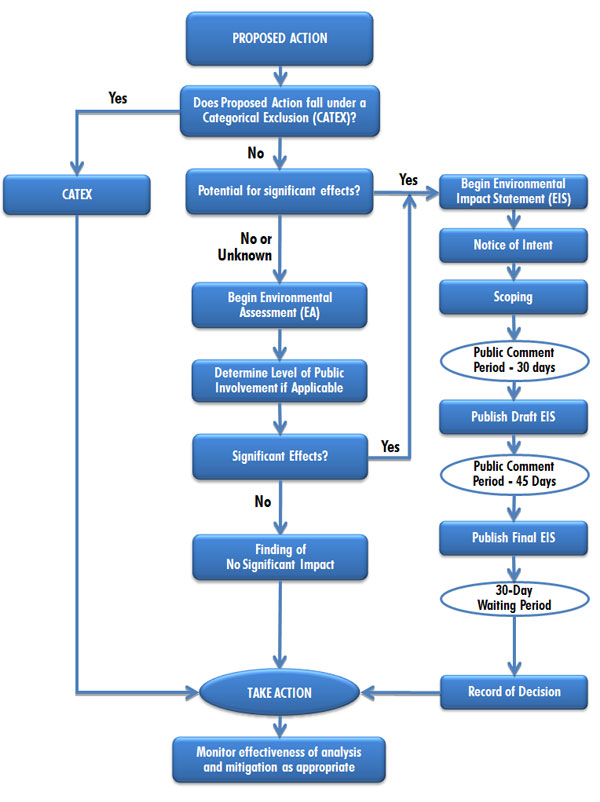
The National Environmental Policy Act (NEPA) process begins whenever MCBH develops a proposal to take a major federal action. The environmental review process under NEPA includes three different levels of analysis:
- Categorical Exclusion determination (CATEX)
- Environmental Assessment/Finding of No Significant Impact (EA/FONSI)
- Environmental Impact Statement (EIS)
CATEGORICAL EXCLUSION (CATEX)
The Council on Environmental Quality (CEQ), established by Section 202 of the NEPA, allows Categorical Exclusions (CATEX) for actions which, under normal circumstances, have been determined to have no significant effect individually or cumulatively on the environment and, therefore for which neither an EA nor an EIS is required. CATEX applies to those actions that do not result in substantial change from the existing environmental conditions at the site of the proposed action.
ENVIRONMENTAL ASSESSMENT/FINDING OF NO SIGNIFICANT IMPACT (EA/FONSI)
An Environmental Assessment (EA) is prepared for those actions that are not Categorically Excluded and when (a) the proposed action is not anticipated to have a significant impact on the environment, or (b) it is uncertain whether the effects of the proposed action will have a significant impact on the environment, or (c) there is reason to believe that the proposed action will be environmentally controversial. Generally, EAs include a brief discussion of:
- Purpose of the proposed action
- Alternatives (as required by section 102(2)(E) of NEPA)
- Environmental impacts of the proposed action and alternatives
- Listing of agencies and persons consulted
An EA will result in either:
- A Finding of No Significant Impact
- A decision to prepare an EIS
- An decision to withdraw the proposed action (Implement the No Action Alternative)
ENVIRONMENTAL IMPACT STATEMENT (EIS)
An Environmental Impact Statement (EIS) is prepared for major actions that are determined by the agency to have significant impacts on the environment. The EIS provides a full and unbiased discussion of significant environmental impacts and informs the decision makers and the public of the reasonable alternatives that would avoid or minimize adverse impacts or enhance the quality of the human environment. An EIS results in a Record of Decision (ROD). The ROD is a public record of the agency's decision selecting one alternative for implementation from the alternatives considered in detail, including the "No Action Alternative." Agencies may prepare an Environmental Assessment to help determine if it needs to prepare an EIS.
Sources:
- CEQ Regulations For Implementing the Procedural Provisions of the National Environmental Policy Act (40 CFR Parts 1500-1508)
- MCO 5090.2 Environmental Compliance and Protection Program
- United States Environmental Protection Agency Website: National Environmental Policy Act Review Process